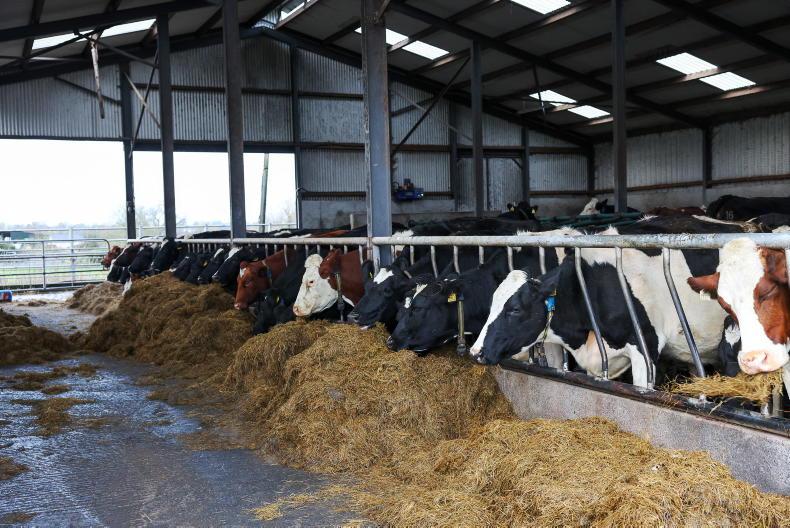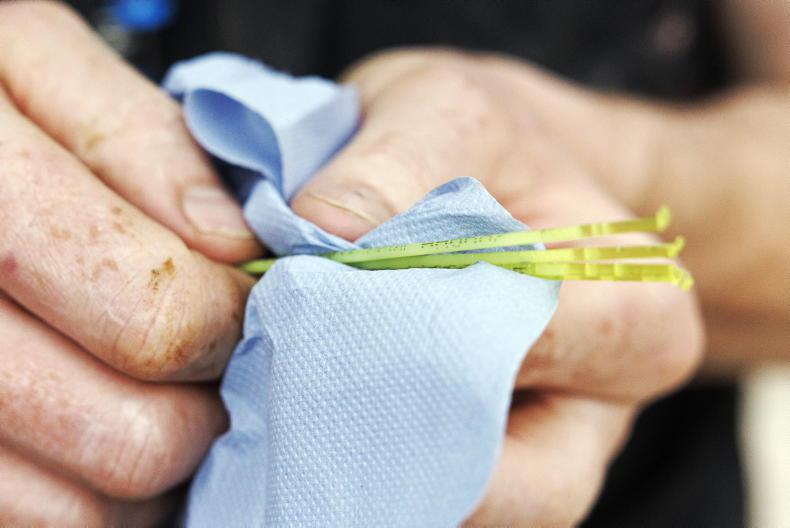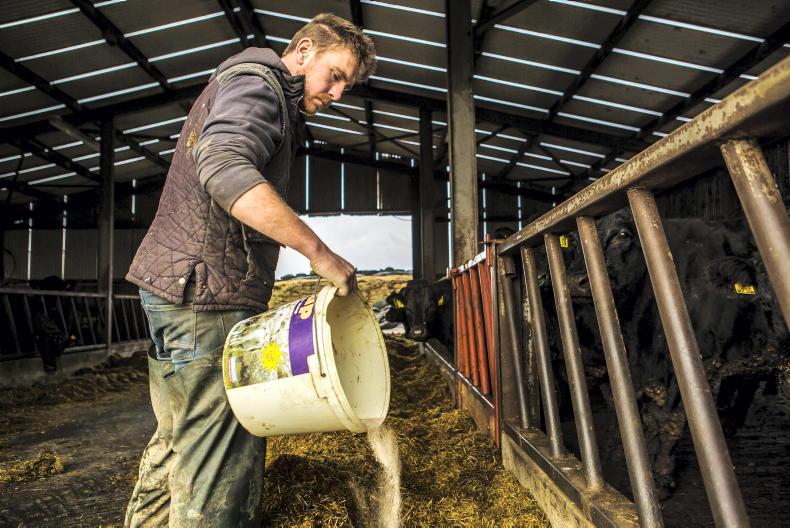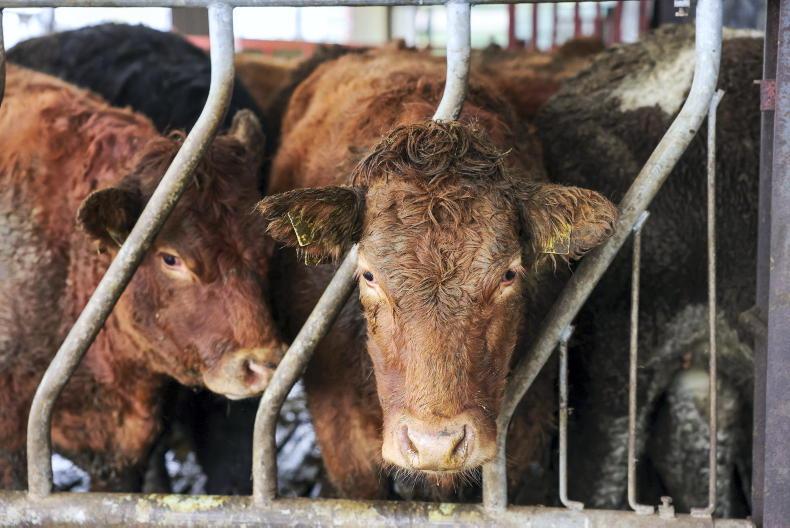In spring-calving suckler herds, handle cows in early November to assess the level of body condition animals are carrying into winter.
The time to alter body condition score (BCS) is in the second trimester of pregnancy, not in the weeks running up to calving.
When it comes to condition scoring and altering fat or thin cows, outlined are five tips to consider.
1. Handling cows
Condition scoring is subjective and a score of 2.5 will be different on a first-cross from a dairy dam compared with a more extreme continental beef-sired cow.
But when done regularly, by the same person, it is a worthwhile exercise. Handle cows along the ribs, the pin and hook bones, as well as the tail head.
If bones can be easily felt without applying pressure by hand, cows are lacking condition and in BCS 2 or below.
A BCS of 2.5 to 3 means bones can be felt with light pressure applied by hand. At BCS 4 or above, bones are hard to feel even with firm pressure being applied.
2. Target scores
Aim to have spring-calving cows between BCS 2.5 and BCS 3 around six to eight weeks before animals are due to calve. This condition should then be maintained until cows calve.
Thin cows are more prone to metabolic issues around calving time, such as milk fevers. Milk yield, colostrum quality and fertility will be negatively affected.
Fat cows are more prone to problems associated with calving difficulty. Calf birth weight may be increased and internal body fat may restrict the opening in the birth canal.
3. What does a BCS unit mean in terms of weight gain or loss?
Roughly speaking, changing from a BCS 2 to BCS 3 is the equivalent of gaining 10% of mature cow weight and vice versa.
If cows are typically 750kg liveweight, it means each unit change in condition is either a gain or loss of 75kg.
4. Change condition gradually
Gaining or losing 70kg to 80kg of liveweight will take anywhere from seven to 10 weeks in dry cows. That means altering February- and March-calving cows should be under way by early November.
Offer thin cows good-quality silage on an ad-lib basis until body condition is corrected. With fat cows on average- to good-quality silage, restrict intakes by 10% to 20%.
Avoid heavy restrictions on forage intakes, as cows can enter a negative energy balance, causing metabolic issues.
5. Provide adequate feed space
When altering body condition, batch thin or fat animals separately and ensure all cows can stand at the feed rail at the same time.
This is particularly important where cows need silage intakes restricted. If all cows cannot access the feed barrier at the same time, dominant animals will eat to appetite. Shy cows will be underfed.
With thin cows, grouping animals separately and providing adequate feed space will eliminate competition for forage. Again, this will ensure all cows can avail of their full forage allocation.
Read more
Exclusive: new weight and age limits to sell calves
Ration ingredients, water supply and ICBF webinar
In spring-calving suckler herds, handle cows in early November to assess the level of body condition animals are carrying into winter.
The time to alter body condition score (BCS) is in the second trimester of pregnancy, not in the weeks running up to calving.
When it comes to condition scoring and altering fat or thin cows, outlined are five tips to consider.
1. Handling cows
Condition scoring is subjective and a score of 2.5 will be different on a first-cross from a dairy dam compared with a more extreme continental beef-sired cow.
But when done regularly, by the same person, it is a worthwhile exercise. Handle cows along the ribs, the pin and hook bones, as well as the tail head.
If bones can be easily felt without applying pressure by hand, cows are lacking condition and in BCS 2 or below.
A BCS of 2.5 to 3 means bones can be felt with light pressure applied by hand. At BCS 4 or above, bones are hard to feel even with firm pressure being applied.
2. Target scores
Aim to have spring-calving cows between BCS 2.5 and BCS 3 around six to eight weeks before animals are due to calve. This condition should then be maintained until cows calve.
Thin cows are more prone to metabolic issues around calving time, such as milk fevers. Milk yield, colostrum quality and fertility will be negatively affected.
Fat cows are more prone to problems associated with calving difficulty. Calf birth weight may be increased and internal body fat may restrict the opening in the birth canal.
3. What does a BCS unit mean in terms of weight gain or loss?
Roughly speaking, changing from a BCS 2 to BCS 3 is the equivalent of gaining 10% of mature cow weight and vice versa.
If cows are typically 750kg liveweight, it means each unit change in condition is either a gain or loss of 75kg.
4. Change condition gradually
Gaining or losing 70kg to 80kg of liveweight will take anywhere from seven to 10 weeks in dry cows. That means altering February- and March-calving cows should be under way by early November.
Offer thin cows good-quality silage on an ad-lib basis until body condition is corrected. With fat cows on average- to good-quality silage, restrict intakes by 10% to 20%.
Avoid heavy restrictions on forage intakes, as cows can enter a negative energy balance, causing metabolic issues.
5. Provide adequate feed space
When altering body condition, batch thin or fat animals separately and ensure all cows can stand at the feed rail at the same time.
This is particularly important where cows need silage intakes restricted. If all cows cannot access the feed barrier at the same time, dominant animals will eat to appetite. Shy cows will be underfed.
With thin cows, grouping animals separately and providing adequate feed space will eliminate competition for forage. Again, this will ensure all cows can avail of their full forage allocation.
Read more
Exclusive: new weight and age limits to sell calves
Ration ingredients, water supply and ICBF webinar










SHARING OPTIONS